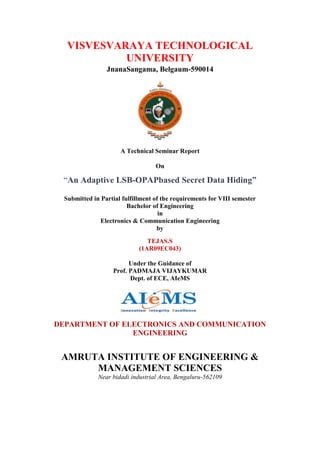The document describes a technical seminar report on an adaptive LSB-OPAP based secret data hiding technique. It was submitted by Tejas.S, an undergraduate student of electronics and communication engineering at Amruta Institute of Engineering and Management Sciences, in partial fulfillment of the requirements for their bachelor's degree. The report discusses a new technique for embedding secret data into color or grayscale images using LSB substitution in an adaptive manner based on pixel intensity ranges. It aims to enhance embedding capacity and imperceptibility compared to traditional LSB techniques.






















